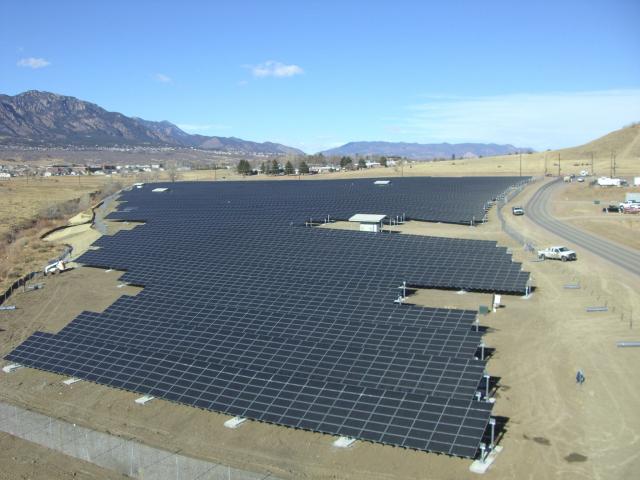The Army released a list of installations Tuesday that are participating in an energy-conserving pilot program to only use as much energy as they create by 2020.
The initiative, called Net Zero, will focus on energy as well as water and waste usage procedures, explained Katherine Hammack, assistant secretary of the Army for Installations, Energy and Environment.
“Operational energy is a critical focus to the whole Department of Defense, and everything that we can do to reduce that logistical field is very important to the Soldiers and the cost of the battles that we’re fighting,” Hammack said during a media roundtable, Wednesday.
Hammack noted that while energy consumption throughout the Army didn’t increase in 2010, it also didn’t decrease.
Installations self-nominated themselves to participate in the pilot, and many chosen were already participating in energy minimization. Hammack said more than 100 nominations were received from installations around the world, which were narrowed down to six in each category of energy, water and waste. Two installations — Fort Bliss, Texas, and Fort Carson, Colo. — will be practicing conservation strategies in all three categories to become integrated Net Zero sites.
Hammack said some of the ways Army installations have already been reducing their energy consumption is by using solar panels, re-purposing used water, and retrofitting water fixtures such as faucets and shower heads.
Maj. Gen. Dana Pittard, the commanding general of Fort Bliss, Texas, said his base is planning on building a 20-megawatt solar facility and a Net Zero housing community of at least 500 homes in the future. The community would be the first one of its kind in the Army.
He also explained that conserving water in Texas is a challenge because of the hot, dry climate there.
“The issue of water in the desert is a huge issue for us,” Pittard said.
He said Fort Bliss is working with the neighboring city of El Paso on how to better use grey water. He also mentioned newly-built base housing areas have been landscaped with naturally-growing desert plants, and Fort Bliss is working on renovating other parts of the base with similar landscaping — essentially getting rid of lawns and trees that require lots of watering.
Hammack noted that each installation is diverse in its size, structure and climate, and each will have unique challenges to reduce energy consumption.
“We don’t want to force each installation to subscribe to a certain strategy overall, but to highlight the many different ways to reach Net Zero,” Hammack explained. “There is no silver bullet that is a one-size-fits-all solution, and one of the things that is important in this pilot program is to identify that there are a variety of ways to reach Net Zero, dependent upon your local resource.”
She also mentioned that energy security is a national imperative, and not having to rely on outside resources for sustainability would be helpful for installations both in the United States and in deployed settings.
The installations participating in the pilot for Net Zero energy by 2020 are:
- — Fort Detrick, Md.
- — Fort Hunter Liggett, Calif.
- — Kwajalein Atoll, Republic of the Marshall Islands
- — Parks Reserve Forces Training Area, Calif.
- — Sierra Army Depot, Calif.
- — West Point, N.Y.
The installations participating in the pilot for Net Zero water by 2020 are:
- — Aberdeen Proving Ground, Md.
- — Camp Rilea, Ore.
- — Fort Buchanan, Puerto Rico
- — Fort Riley, Kan.
- — Joint Base Lewis-McChord, Wash.
- — Tobyhanna Army Depot, Pa.
The installations participating in the pilot for Net Zero waste by 2020 are:
- — Fort Detrick, Md.
- — Fort Hood, Texas
- — Fort Hunter Liggett, Calif.
- — Fort Polk, La.
- — Joint Base Lewis-McChord, Wash.
- — U.S. Army Garrison Grafenwoehr, Germany.











